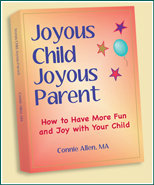Children of all ages have tantrums and emotional upsets. Interestingly, the steps to respond to tantrums are the same, whether your child is 2 or 25. Even if you have an older or even grown child, this info applies to your child also.
Thanks to my work with children and parents, I’ve discovered there is more than one kind of tantrum. Many people believe tantrums are only about a crying, upset child who doesn’t get his way, and there is one way to respond to all tantrums.
Yet if you treat all tantrums as if they are the same, you miss the deeper communication your child is giving you.
Yes, a tantrum – whether it is loud, screaming and crying or silent and withdrawn – is a communication from your child. Your child is telling you something important.
It is not just a manipulation or an act of defiance. Your child is not testing you, even though it may feel like that.
For various possible reasons, your child has chosen this method to communicate with you.
So far, I’ve discovered 6 different kinds of tantrums with 6 different messages. Some of them are somewhat similar and yet each requires that you respond in a unique way. I’d like to share a couple of them with you.
First is the kind everyone generally thinks of when they hear the word ‘tantrum.” Johnny wants something, and you say, “No,” which prompts a screaming, crying scene. What makes this unique is that it’s part of a repetitive pattern your child has learned over time.
His communication sounds something like this, “I want something and you’re not giving it to me. I’ve used screaming and crying before and it’s worked so I will keep this up until you give in and give me what I want just to get me to stop.”
Some parents have told me their child can go on for hours. This is exhausting and no-fun for you or your child.
This child doesn’t know or trust the power of his words to have an impact with you so his default is crying as a communication.
Second is one every parent knows. The unique communication for this one is, “I’m tired, hungry, or over-stimulated, and I can’t physically handle any more. I am at the end of my rope.”
If you respond to this communication in the same way you would the first kind of tantrum, you miss the point entirely. You could become irritated and ignore the communication or you give in and it doesn’t resolve the real problem.
Another kind of tantrum communication is, “My emotional needs are not being met, and I don’t know how else to tell you I’m hurting.”
If you ignore, punish or give in to this kind of tantrum, your child feels alone, isolated, and disconnected from you. This creates more unmet emotional needs and more tears, screaming or quiet retreat.
This kind of tantrum requires sensitivity, skill and insight to handle well. It needs to be heard in all its depth and emotional pain and often occurs in repetitve kinds of situations. It requires your awareness of your child’s emotional needs and how to best respond to them.
In my teleclass on July 21, “Parents Keep Your Cool: How to Effectively and Lovingly Respond to Your Child’s Emotional Upsets and Tantrums”
I’ll talk in deptth about all 6 kinds of tantrums and how to recognize and respond effectively and lovingly to each kind. I will show you how you can easily guide your child to use language to communicate her desires and to deal with disappointment.
I invite you to learn my personal secrets so you can hear your child’s communication and calmly and lovingly respond. (Perhaps we’ll even discover another kind of tantrum as you share your stories!)


 Just a little bit about me -- I'm a coach for parents, visionary guide, insightful trainer, and powerful consultant.
Just a little bit about me -- I'm a coach for parents, visionary guide, insightful trainer, and powerful consultant.
Speak Your Mind